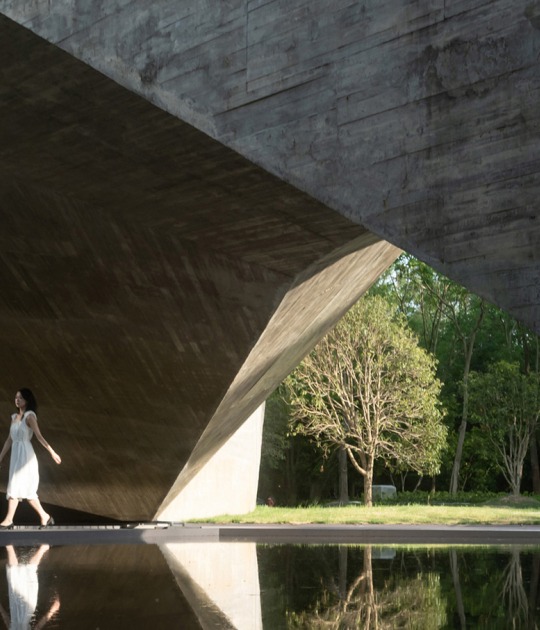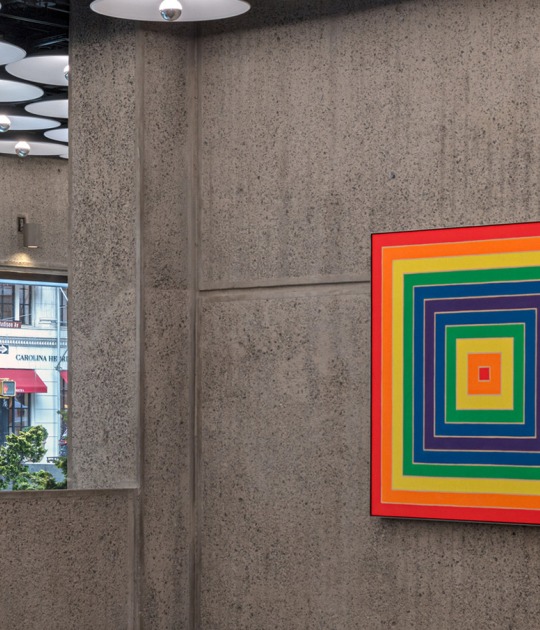As you go through the house, the materials gain warmth and the rooms become more intimate. On the ground floor are the common rooms and the main entrance, on the second floor are the main bedrooms and finally on the attic floor are the terrace and the pool.
Description of project by Baum Arquitectura
This is a project developed around the central void. The patio organizes the whole house and the light spills down to the ground floor. The staircase starts in a first historical vaulted section and then rises, already with contemporary materials, and guides the gaze towards the upper gallery. The central railing, a single folded piece of 10mm lacquered steel, cuts through the entire house and zigzags up to the deck.
The ground floor reinforces its character as an extension of the public space, so typical of Andalusian patio houses. Visitors who pass through the hall are faced with a sequence of chiaroscuro, room-patio-room-patio, which culminates in the kitchen-dining room, with the backyard as a skylight at three levels.
The materials are gaining warmth as they approach the most intimate settings, moving from polished concrete on the ground floor to the industrial parquet on the upper floor. In the floors and vaults, it is decided to leave the construction systems “in the air”, both in the splints and wooden beams and in the areas of brick vaults. The new floors assume this same strategy and appear with visible collaborating plates.
The rehabilitation of this courtyard house from the s. XVIII involved a long exercise of analysis, diagnosis and intervention. The process of approach to the patrimonial aspect assumed a series of strategies associated with processes of identification, purification and synthesis, consolidation or insertion of prostheses, which are developed in-depth later.
PATRIMONIAL TECTONICS
This project crystallizes an approach to heritage based on the idea of urban palimpsest, what we call “heritage tectonics”: the city as a series of semitransparent layers that reveal and colour the lower strata, history as a succession of presents. From the consciousness not only of intervening in the current moment but of building the past of the future, architecture stands as a vehicle of cultural and technological transmission, capable of projecting our present forward and the interpretation that we make of the preceding moments today. . Thus, for the rehabilitation of this courtyard house, we apply a very clear protocol of action.-
1. Analysis.- recognize, protect and value the historical construction elements, from the typological, constructive, functional and spatial study.
2. Synthesis.- eliminate architectural distortions.- Added elements that will not contribute to the understanding of the patio house.
3. Consolidation.- reinforcement and consolidation of the constructive elements that presented pathologies.- vaults, walls, slabs. These interventions were carried out mainly with traditional construction materials and techniques: lime mortars, bricks reused from the work itself, whitewashed, vaulted, etc.
4. Metalanguage.- interventions aimed at undressing the building and allowing the house to explain itself.- its construction techniques and materials. In this way, some exposed brick walls were left in the factory and some of the lintels and vaults were discovered.
5. Symbiosis.- insertion of new elements destined for the adaptation to the needs of the users. Despite having carried out some of these interventions with contemporary materials, this project does not seek the new-old tension, but rather to reach a new state in which the past and the present are integrated without friction. In these harmonic dissonances, a natural transition is achieved from the heritage to the contemporary, through a constructive and technological coherence rooted in traditional knowledge.
6. Ecosynthesis.- the whole project seeks to promote the bioclimatic character of these houses, cool in summer and warm in winter: greenhouse effect in cold months and currents induced by chimney effect in hot months. The cross vents between patios, as communicating vessels, allow taking advantage of the thermal inertia of the brick walls.






































